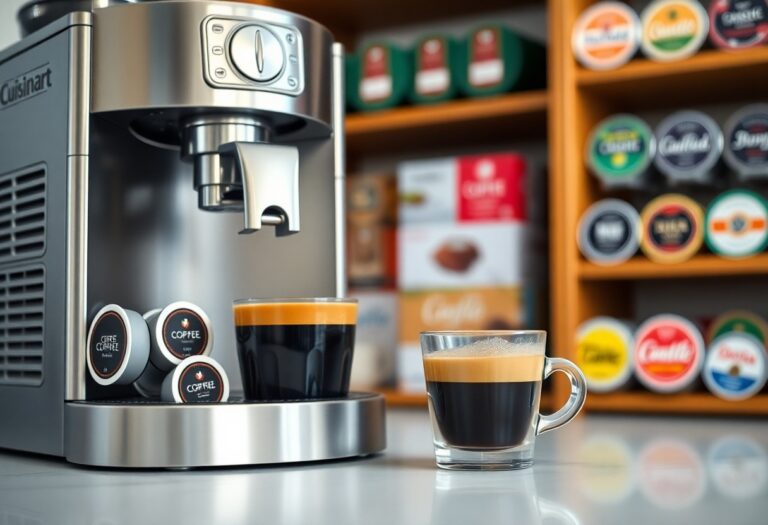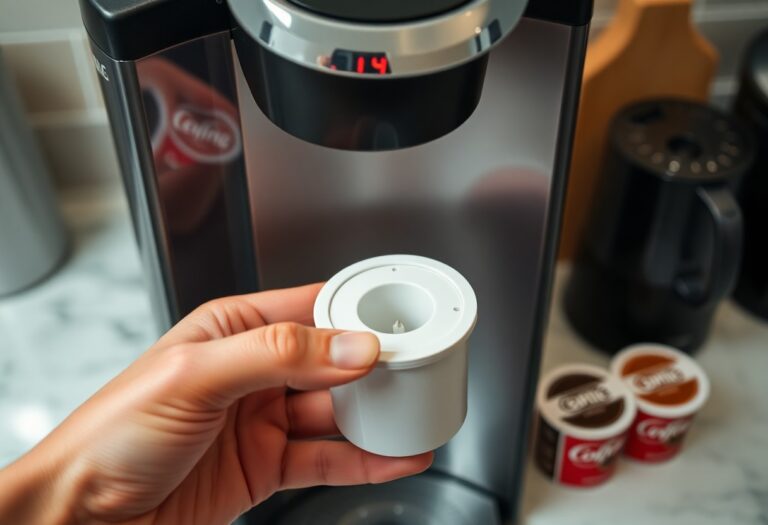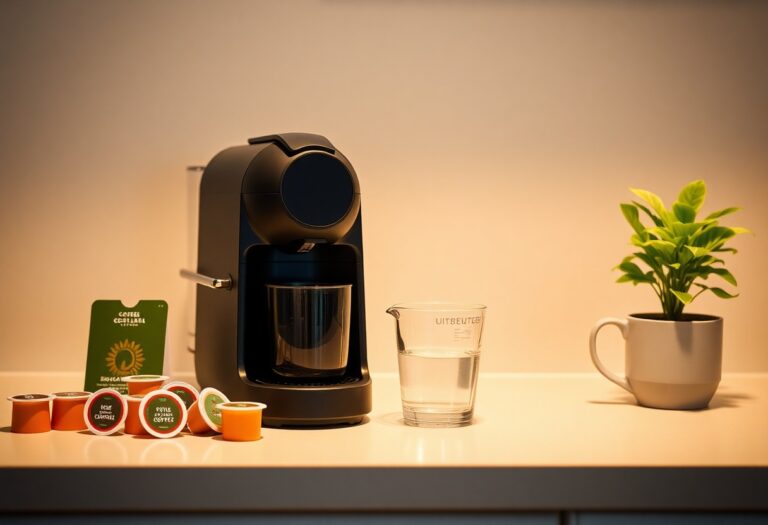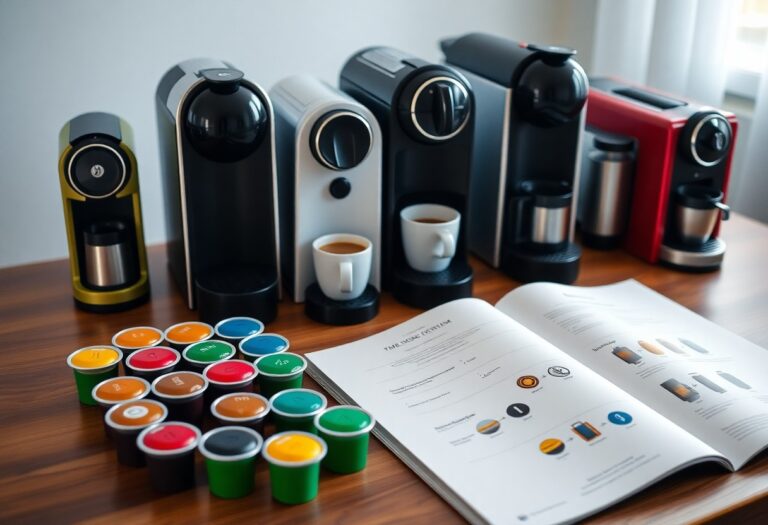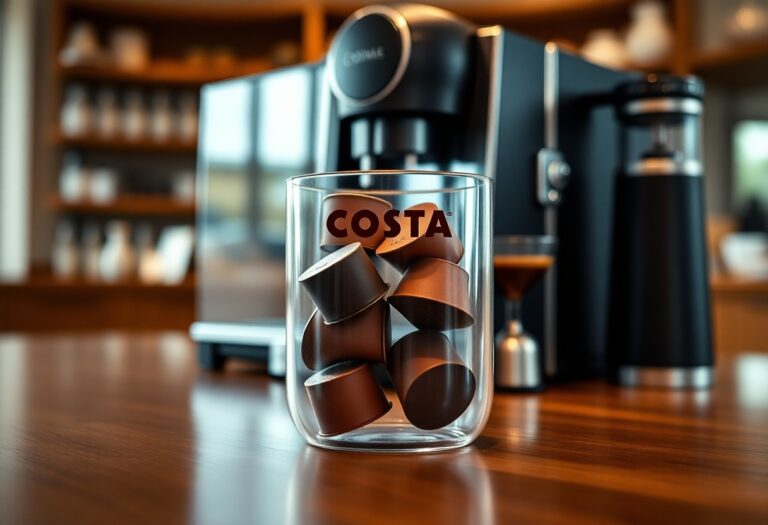How to Make Coffee from an Espresso Machine: Brewing Techniques
Espresso stands out in the world of coffee for its rich crema, intense flavor, and concentrated form. Unlike other brewing methods, espresso is crafted by forcing hot water through finely ground coffee under high pressure, creating a bold and creamy cup that coffee lovers cherish.
Mastering brewing techniques is crucial to unlock the full potential of your espresso machine and achieve a perfect shot every time. Precision in each step—from grinding to extraction—directly impacts the taste, aroma, and balance of your coffee.
In this article on How to Make Coffee from an Espresso Machine: Brewing Techniques, you will explore essential aspects such as:
- Selecting the right grind size
- Accurate dosing
- Proper tamping
- Managing extraction time and pressure
These foundational skills will help you brew espresso like a pro, enhancing your home coffee experience.
Understanding Espresso
Espresso stands out from other coffee beverages due to its rich crema and intense flavor profile. The crema, a thick golden-brown or red-brown foam on top of the espresso, adds a velvety texture and enhances the overall sensory experience. Its viscosity, thicker than other brews, coats the palate with a luxurious mouthfeel.
Factors like extraction time and pressure are crucial in crafting a high-quality espresso shot. The precise balance between these elements determines the depth of flavor and aroma in the final cup. Extraction time influences the strength and complexity of the brew, while pressure plays a key role in extracting oils and soluble compounds for a well-rounded taste profile.
By understanding these fundamental aspects of espresso brewing, you can appreciate the intricate artistry behind each perfect shot of this beloved coffee beverage.
Brewing Espresso: Step-by-Step Guide
The grind size is one of the most critical factors affecting espresso quality. For espresso, you need a fine grind—much finer than what you would use for drip coffee or French press. The fine grind increases surface area, allowing hot water to extract flavors quickly under pressure.
Using the right grind size ensures:
- Proper extraction time (usually 20-30 seconds)
- Balanced flavor without bitterness or sourness
- Rich crema formation
Achieving a consistent and uniform grind requires precision. A burr grinder is essential because it crushes coffee beans between two abrasive surfaces, producing evenly sized particles. Blade grinders, by contrast, create uneven grounds that lead to inconsistent extraction and off-flavors.
Tips for grinding espresso with a burr grinder:
- Adjust the grinder to a fine setting close to powdered sugar but not so fine it clogs the portafilter
- Grind fresh just before brewing to preserve aroma and flavor
- Perform small test grinds and brew shots, then tweak grind size based on shot timing and taste
- Clean the grinder regularly to avoid buildup that affects consistency
Mastering grind size lets you control extraction and ultimately craft a delicious espresso shot tailored to your taste preferences.
Dosing and Tamping: Key Steps for a Balanced Shot
Dosing and tamping are crucial steps in the espresso-making process, significantly impacting the flavor and quality of your shot. Here are key points to consider:
1. Accurate Dosing
Proper dosing ensures that you extract the desirable flavors from the coffee grounds. Inaccurate dosing can lead to under-extraction, resulting in weak and sour espresso, or over-extraction, leading to bitterness.
2. Techniques for Tamping Evenly
Tamping plays a vital role in ensuring uniformity in extraction during brewing. Here are some techniques to achieve consistent tamping:
- Even Pressure: Apply even pressure when tamping down the coffee grounds in the portafilter. Inconsistent pressure can lead to uneven extraction.
- Level Surface: Ensure the tamped coffee grounds have a level surface to promote even water distribution during extraction.
- Twist and Polish: After tamping, give the portafilter a gentle twist to polish the puck further, aiding in a more uniform extraction.
By mastering dosing and tamping techniques, you can enhance the balance and flavor profile of your espresso shot. Experiment with different methods to find what works best for your brewing setup and taste preferences. For beginners looking for a comprehensive guide on pulling the perfect shot of espresso, this step-by-step guide is an excellent resource.
Mastering the Extraction Process: From Start to Finish
Understanding a Well-Extracted Espresso Shot
A well-extracted espresso shot is a work of art, characterized by a honey-like flow as the rich, dark liquid streams out of the portafilter. This flow should be steady and consistent, resembling the thickness and color of honey, indicating a properly extracted shot.
Signs of Over-Extraction
Over-extraction occurs when water extracts too many flavors from the coffee grounds, resulting in an undesirable taste. Here are some common signs of over-extraction to watch out for:
- Bitter Taste: If your espresso tastes excessively bitter or acrid, it may be a sign of over-extraction.
- Dark, Thin Crema: A crema that is too dark and thin can indicate that the coffee has been over-extracted.
- White Spots: White spots on the surface of your espresso are a clear sign of over-extraction, signaling that undesirable compounds have been released.
Tips to Avoid Over-Extraction
To ensure you achieve the perfect extraction every time, here are some tips to avoid over-extraction:
- Adjust Grind Size: Finer grinds can lead to over-extraction, so try coarsening your grind slightly.
- Check Extraction Time: Monitor the time it takes for extraction; aim for 20-30 seconds for optimal results.
- Taste Your Espresso: Develop your palate to recognize the signs of over-extraction by regularly tasting your shots.
Mastering the extraction process is a delicate balance between art and science, where attention to detail and practice can lead to the perfect cup of espresso.
Exploring Roast Levels and Flavor Profiles in Espresso Brewing
Choosing the right roast level is fundamental when crafting espresso, as it directly shapes the flavor notes and overall experience of your shot. Typically, espresso roasts lean toward the medium to light spectrum rather than very dark. This choice preserves brightness, complexity, and sweeter undertones often lost in darker roasts.
How Different Roast Levels Impact Flavor
Here’s how various roast levels influence the taste of your espresso:
- Light roast espresso highlights floral, fruity, and acidic notes. You might detect hints of berries or citrus, giving a lively cup with pronounced clarity.
- Medium roast espresso balances acidity and body, introducing caramelized sugars and nutty flavors without overwhelming brightness.
- Dark roast espresso emphasizes boldness and bitterness with smoky or chocolatey tones but risks muting subtler nuances.
Adapting Your Brewing Technique to Flavor Preferences
Your brewing method should align with the flavor profile you’re aiming for. Consider these tips:
- Coffees with bright, acidic notes respond better to precise temperature control and shorter extraction times to avoid over-extracting bitter compounds.
- Beans offering richer, chocolatey profiles tolerate longer extractions and higher temperatures, bringing out deeper sweetness.
Understanding this interplay helps you select beans that align with your taste goals. Experimenting with different roast levels reveals how flavor notes shift under varying espresso parameters. This knowledge empowers you to tailor every shot from grind size to extraction time, enhancing your coffee’s unique character at the machine.
Alternative Methods for Brewing Espresso-like Coffee at Home
Not everyone has access to an expensive espresso machine, yet you can still enjoy espresso-like coffee using alternative methods such as the Aeropress and Moka Pot. These tools offer practical ways to replicate the intensity and richness of espresso with some adjustments.
Aeropress Technique
- Use a fine grind similar to what you’d use for espresso.
- Employ two filters stacked together to reduce sediment and improve clarity.
- Preheat your water to about 195°F–205°F to extract optimal flavor.
- Press gently but steadily to mimic the pressure of an espresso machine.
- This method produces a concentrated shot with a smooth texture and bold flavor.
Moka Pot Technique
- Grind your coffee medium-fine, slightly coarser than espresso but finer than drip grind.
- Preheat the water before pouring it into the bottom chamber; this shortens brewing time and reduces bitterness.
- Assemble the Moka Pot securely and place it on moderate heat.
- The resulting brew is rich and robust, closely resembling traditional espresso, though with less crema.
Both methods require experimentation with grind size, water temperature, and pressing or brewing time to get closer to that signature honey-like flow and balanced extraction found in classic espresso shots. These alternatives make it possible to explore the complexities of espresso flavors without investing in high-end equipment.
Convenient Devices for On-the-Go Espresso Lovers: GSI Outdoors Portable Espresso Maker & Manual Pull Machines
When it comes to on-the-go espresso making, portable devices like the GSI Outdoors Portable Espresso Maker offer convenience without compromising on the quality of your coffee. These devices are designed for outdoor enthusiasts, travelers, or anyone who craves a good espresso while on the move.
Grind Size Variation Across Methods: A Deeper Look
In the realm of grind size variation across brewing methods, it’s crucial to understand how different methods require specific grind sizes to extract the best flavors:
- Lighter Flavors vs. Richer Flavors: For coffee with lighter, brighter notes, such as those found in pour-over methods, a coarser grind is preferable. This allows for a slower extraction process that enhances the delicate nuances of the beans. On the other hand, richer flavors, typical of espresso shots, demand a finer grind to achieve a more intense and full-bodied taste profile.
- Pour-over vs. Espresso: Pour-over methods like Chemex or V60 thrive on medium-coarse grinds that resemble sea salt in texture. This consistency ensures a balanced extraction that highlights the coffee’s acidity and complexity. In contrast, espresso requires a very fine grind akin to powdered sugar to facilitate the quick extraction needed for its signature bold flavor and creamy texture.
By mastering the art of adjusting grind sizes according to brewing methods, you can unlock a world of diverse coffee experiences tailored to your preferences and settings. Whether you opt for the portability of manual pull machines or explore traditional espresso-making techniques with devices like the GSI Outdoors Portable Espresso Maker, understanding grind size variation is key to achieving your desired cup of coffee anytime, anywhere.
Final Thoughts on Mastering Coffee from an Espresso Machine
Remember, the key to mastering coffee from an espresso machine lies in the details. By fine-tuning your grind size, dosing precision, tamping pressure control, extraction optimization, and water temperature adjustment, you can craft the perfect cup of espresso tailored to your preferences. Whether you opt for a portable device like the GSI Outdoors Portable Espresso Maker for your travels or choose to delve into manual pull machines for a more hands-on experience, practice and patience are essential. Embrace the journey of discovery and enjoy the process of honing your brewing techniques to savor exceptional coffee every time.


